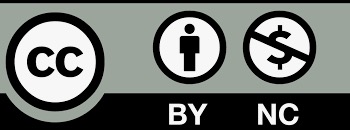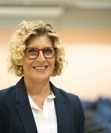Published
2025-03-28
Section
Review Articles
License
Copyright (c) 2025 Ailing Tian, Jian-Hong Ye

This work is licensed under a Creative Commons Attribution-NonCommercial 4.0 International License.
The journal adopts the Attribution-NonCommercial 4.0 International (CC BY-NC 4.0), which means that anyone can reuse and redistribute the materials for non-commercial purposes as long as you follow the license terms and the original source is properly cited.
Author(s) shall retain the copyright of their work and grant the Journal/Publisher rights for the first publication with the work concurrently licensed since 2023 Vol.8 No.2.
Under this license, author(s) will allow third parties to download, reuse, reprint, modify, distribute and/or copy the content under the condition that the authors are given credit. No permission is required from the authors or the publisher.
This broad license intends to facilitate free access, as well as the unrestricted use of original works of all types. This ensures that the published work is freely and openly available in perpetuity.
By providing open access, the following benefits are brought about:
- Higher Visibility, Availability and Citations-free and unlimited accessibility of the publication over the internet without any restrictions increases citation of the article.
- Ease of search-publications are easily searchable in search engines and indexing databases.
- Rapid Publication – accepted papers are immediately published online.
- Available for free download immediately after publication at https://esp.as-pub.com/index.php/ESP

Copyright Statement
1.The authors certify that the submitted manuscripts are original works, do not infringe the rights of others, are free from academic misconduct and confidentiality issues, and that there are no disputes over the authorship scheme of the collaborative articles. In case of infringement, academic misconduct and confidentiality issues, as well as disputes over the authorship scheme, all responsibilities will be borne by the authors.
2. The author agrees to grant the Editorial Office of Environment and Social Psychology a licence to use the reproduction right, distribution right, information network dissemination right, performance right, translation right, and compilation right of the submitted manuscript, including the work as a whole, as well as the diagrams, tables, abstracts, and any other parts that can be extracted from the work and used in accordance with the characteristics of the journal. The Editorial Board of Environment and Social Psychology has the right to use and sub-licence the above mentioned works for wide dissemination in print, electronic and online versions, and, in accordance with the characteristics of the periodical, for the period of legal protection of the property right of the copyright in the work, and for the territorial scope of the work throughout the world.
3. The authors are entitled to the copyright of their works under the relevant laws of Singapore, provided that they do not exercise their rights in a manner prejudicial to the interests of the Journal.
About Licence
Environment and Social Psychology is an open access journal and all published work is available under the Creative Commons Licence, Authors shall retain copyright of their work and grant the journal/publisher the right of first publication, and their work shall be licensed under the Attribution-NonCommercial 4.0 International (CC BY-NC 4.0).
Under this licence, the author grants permission to third parties to download, reuse, reprint, modify, distribute and/or copy the content with attribution to the author. No permission from the author or publisher is required.
This broad licence is intended to facilitate free access to and unrestricted use of original works of all kinds. This ensures that published works remain free and accessible in perpetuity. Submitted manuscripts, once accepted, are immediately available to the public and permanently accessible free of charge on the journal’s official website (https://esp.as-pub.com/index.php/ESP). Allowing users to read, download, copy, print, search for or link to the full text of the article, or use it for other legal purposes. However, the use of the work must retain the author's signature, be limited to non-commercial purposes, and not be interpretative.
Click to download <Agreement on the Licence for the Use of Copyright on Environmental and Social Psychology>.
How to Cite
A systematic literature review of student team creativity: An empirical study from 2014-2023
Ailing Tian
Faculty of Education, Beijing Normal University, Beijing, 100875, P.R. China
Jian-Hong Ye
Faculty of Education, Beijing Normal University, Beijing, 100875, P.R. China
DOI: https://doi.org/10.59429/esp.v10i3.3482
Keywords: empirical research; students; systematic literature review; team creativity; teamwork
Abstract
In the context of creativity as an important core competence for students, it is pivotal to study students' team creativity, which explains the necessity of group context and collective work, and promotes the development of students' team achievement and task performance. Despite recognizing the value of team creativity in student development, there is a lack of coherence and consolidation in the application of the current research in this domain. The aim of this systematic review was therefore to conduct a detailed analysis of the application of team creativity for young researchers. This systematic literature review aimed to comprehensively analyze the empirical studies on students' team creativity over the past decade (2014-2023). Through a systematic search and careful screening, 10 eligible studies were identified and analyzed, and it was found that: (1) The study area was scattered; students formed teams and completed research tasks by themselves; and the research subjects were mainly undergraduates and postgraduates; (2) Research hypotheses and research questions focused on verifying the factors that affect students' team creativity and their impact on team achievement; and (3) Factors affecting students' team creativity include team communication, team cognitive style, team quick trust, and jealousy. There is a positive correlation between student team creativity and team achievement and task performance.
References
[1]. 1.Carmeli, A., & Paulus, P. B. (2014). CEO ideational facilitation leadership and team creativity: The mediating role of knowledge sharing. The Journal of Creative Behavior, 49 (1), 53-75. https://doi.org/10.1002/jocb.59
[2]. 2.Zhou, E., & Xin, M. (2023). How does cognitive conflict affect research team creativity? - The chain-mediated effects of team resilience and team positivity. Science and Management, 44(2), 75-81. https://doi.org/10.3969/j.issn.1003-8256.2024.02.010
[3]. 3.Lai, C. K., Haim, E., Aschauer, W., Haim, K., & Beaty, R. E. (2024). Fostering creativity in science education reshapes semantic memory. Thinking Skills and Creativity, 53, 101593–101593. https://doi.org/10.1016/j.tsc.2024.101593
[4]. 4.Liu, C. H., Horng, J. S., Chou, S. F., & Huang, Y. C. (2017). Analysis of tourism and hospitality sustainability education with co-competition creativity course planning. Journal of Hospitality, Leisure, Sport and Tourism Education, 21, 88-100. https://doi.org/10.1016/j.jhlste.2017.08.008
[5]. 5.Jahnke, I., Haertel, T., & Johannes, W. (2017). Teachers' conceptions of student creativity in higher education. Innovations in Education and Teaching International, 54(1), 87-95. https://doi.org/10.1080/14703297.2015.1088396
[6]. 6.Kettler, T., & Bower, J. (2017). Measuring creative capacity in gifted students: comparing teacher ratings and student products. Gifted Child Quarterly, 61(4), 290-299. https://doi.org/10.1177/0016986217722617
[7]. 7.Mannucci, P. V., & Yong, K. (2018). The differential impact of knowledge depth and knowledge breadth on creativity over individual careers. Academy of Management Journal, 61, 1741-1763. https://doi.org/10.5465/amj.2016.0529
[8]. 8.Amabile, T. M. (1983). The social psychology of creativity: A componential conceptualization. Journal of Personality and Social Psychology, 45, 357-376. https://doi.org/10.1037/0022-3514.45.2.357
[9]. 9.Li J. J., Zhang, J., & Zhang, N. (2024) How team work passion affects team creativity? An investigation of multi-level causal circle mechanism from a dynamic computational perspective. Advances in Psychological Science, 32(2), 206-227. https://doi.org/10.3724/SP.J.1042.2024.00206
[10]. 10.Wang, Y., Chen, Z., Li R., & Zhou M. (2023) The man at the helm is strong, the punter is innovative? The promotion mechanism of leadership qualification excess to team creativity. Journal of Psychology, 56(3), 326-338. https://doi.org/10.3724/SP.J.1041.2024.00326
[11]. 11.Zhang, W., Zhang, Q., Yu, B., & Zhao, L. (2015). Knowledge map of creativity research based on keywords network and Co-word analysis, 1992-2011. Quality & Quantity, 49(3), 1023-1038. https://doi.org/ 10.1007/s11135-014-0032-9
[12]. 12.Yefet, M., & Glicksohn, J. (2020). Examining the influence of mood on the bright side and the dark side of creativity. Journal of Creative Behavior, 55(2), 337-347. https://doi.org/ 10.1002/jocb.454
[13]. 13.Hendarsjah, H., Susanto, E., Lies Sugianto, B. R., & Handoko, T. H. (2019). Curvilinear relationship between intra-team trust and team innovation: The moderating role of task complexity. Journal of Asia Business Studies, 13(3), 472-487. https://doi.org/10.1108/JABS-12-2016-0180
[14]. 14.Somech, A., & Drach-Zahavy, A. (2013). Translating team creativity to innovation implementation: The role of team composition and climate for innovation. Journal of Management, 39(3), 684-708. https://doi.org/ 10.1177/0149206310394187
[15]. 15.Ou, Z., Chen, T., Li, F., & Tang, P. (2018). Constructive controversy and creative process engagement: The roles of positive conflict value, cognitive flexibility, and psychological safety. Journal of Applied Social Psychology, 48, 101-113. http://doi.org/ 10.1111/jasp.12494
[16]. 16.Zhang, J., Zhou, L., Li, L., & Hua, W. (2023) What makes teaching good? Mechanisms of teacher's dialectical feedback on college students' team creativity. Journal of Psychology, 55(8), 1301-1316, https://doi.org/10.3724/SP.J.1041.2023.01301
[17]. 17.Zacher, H., & Johnson, E. (2015). Leadership and creativity in higher education. Studies in Higher Education, 40, 1210-1225. https://doi.org/10.1080/03075079.2014.881340
[18]. 18.Keller, R. T. (2006). Transformational leadership, initiating structure, and substitutes for leadership: A longitudinal study of research and development project team performance. Journal of Applied Psychology, 91(1), 202-210. https://doi.org/10.1037/0021-9010.91.1.202
[19]. 19.Muller-Camen, M., & Salzgeber, S. (2005). Changes in academic work and the chair regime: The case of German business administration academics. Organization Studies, 26(2), 271-290. https://doi.org/10.1177/0170840605049802
[20]. 20.Curseu, P. L. (2010). Team creativity in web site design: An empirical test of a systemic model. Creativity Research Journal, 22, 98-107. https://doi.org/10.1080/10400410903579635.
[21]. 21.Grawitch, M. J., Munz, D. C., Elliott, E. K., & Mathis, A. (2003). Promoting creativity in temporary problem-solving groups: The effects of positive mood and autonomy in problem definition on idea-generating performance. Group Dynamics: Theory, Research, and Practice, 7(3), 200-213. https://doi.org/10.1037/1089-2699.7.3.200
[22]. 22.Barczak, G., Lassk, F., & Mulki, J. (2010). Antecedents of team creativity: An examination of team emotional intelligence, team trust and collaborative culture. Creativity and Innovation Management, 19, 332-345. https://doi.org/10.1111/j.1467-8691.2010.00574.x
[23]. 23.Olaisen, J., & Revang, O. (2017). Working smarter and greener: Collaborative knowledge sharing in virtual global project teams. International Journal of Information Management, 37(1), 1441-1448. http://doi.org/10.1016/j.ijinfomgt.2016.10.002
[24]. 24.Yang, Z. R., Xie, Z. S., & Bao, G. M. (2010). The mechanism of teams’ swift trust and interaction behavior on team creativity. Journal Fuzhou University (Philosophy and Social Sciences), 6, 31-34. https://doi.org/10.3969/j.issn.1002-3321.2010.06.004
[25]. 25.Komara, C., & Sriyanto, W. (2018). The effectiveness of applying constructive controversy method in gaining student’s critical thinking for writing argumentative essay. Getsempena English Education Journal, 5(2), 177-186. https://doi.org/10.46244/geej.v5i2.857
[26]. 26.Mesmer-Magnus, J., & Dechurch, L. (2012). Information sharing and team performance: A meta-analysis. IEEE Engineering Management Review, 40(1), 119–136. https://doi.org/10.1109/emr.2012.6172774
[27]. 27.Hinds, P. J., & Mortensen, M. (2005). Understanding conflict in geographically distributed teams: the moderating effects of shared identity, shared context, and spontaneous communication. Organization Science, 16(3), 290–307. https://doi.org/10.1287/orsc.1050.0122
[28]. 28.Cheng, H. H., & Yang, H. L. (2014). The antecedents of collective creative efficacy for information system development teams. Journal of Engineering & Technology Management, 33, 1-17. https://doi.org/10.1016/j.jengtecman.2013.12.001
[29]. 29.Hill, G. W. (1982). Group versus individual performance: Are N + 1 heads better than one? Psychological Bulletin, 91(3), 517-539. https://doi.org/10.1037/0033-2909.91.3.517
[30]. 30.Bǎlǎu, G., Faems, D., & Bij, H. (2019). Team experiential cognitive style and team performance: The moderating impact of workplace setting. Creativity and Innovation Management, 28(3), 343–354. https://doi.org/10.1111/caim.12319
[31]. 31.Norris, P., & Epstein, S. (2011). An experiential thinking style: Its facets and relations with objective and subjective criterion measures. Journal of Personality, 79, 1043-1079. http://doi.org/10.1111/j.1467-6494.2011.00718.x
[32]. 32.Aggarwal, I., & Woolley, A. W. (2019). Team creativity, cognition, and cognitive style diversity. Management Science, 65, 1586-1599. https://doi.org/10.1287/mnsc.2017.3001
[33]. 33.Epstein, S. (2003). Cognitive - experiential self - theory of personality. In T. Millon, & M. J. Lerner (Eds.), Handbook of psychology (pp. 159-184). John Wiley & Sons. https://doi.org/10.13140/RG.2.2.25295.74408
[34]. 34.Maloney, M. M., Bresman, H., Zellmer-Bruhn, M. E., & Beaver, G. R. (2016). Contextualization and context theorizing in teams research: A look back and a path forward. The Academy of Management Annals, 10, 891-942. https://doi.org/10.5465/19416520.2016.1161964
[35]. 35.Mitchell-McCoy, J. (2005). Linking the physical work environment to creative context. Journal of Creative Behavior, 39, 167-189. http://doi.org/10.1002/j.2162-6057.2005.tb01257.x
[36]. 36.Alabdouli, S. R., Alriyami, H. M., Ahmad, S. Z., & Mertzanis, C. (2023). Interprofessional nursing education and the role of swift trust and task conflict in team creativity: the mediating role of team interactive behaviors. Journal of Health Organization and Management, 37(8), 505-525. https://doi.org/10.1108/JHOM-01-2023-0028
[37]. 37.Boies, K., Fiset, J., & Gill, H. (2015). Communication and trust are key: Unlocking the relationship between leadership and team performance and creativity. The Leadership Quarterly, 26(6), 1080-1094. https://doi.org/10.1016/j.leaqua.2015.07.007
[38]. 38.Robert, L. P., Dennis, A. R., & Hung, Y. T. C. (2009). Individual swift trust and knowledge-based trust in face-to-face and virtual team members. Journal of Management Information Systems, 26(2), 241-279. https://doi.org/10.2753/MIS0742-1222260210
[39]. 39.Chae, S. W. (2016). Perceived proximity and trust network on creative performance in virtual collaboration environment. Procedia Computer Science, 91, 807-812. https://doi.org/10.1016/j.procs.2016.07.084
[40]. 40.Berthold, J. (2015). Stimulating team creativity: The influence of swift-trust on the team creativity process. Journal of Sustainability Management, 3(1), 19-28. https://doi.org/10.19030/jsm.v3i1.9518
[41]. 41.Lazarus, R. S. (1991). Progress on a cognitive-motivational-relational theory of emotion. American Psychologist, 46(8), 819-834. https://doi.org/10.1037//0003-066x.46.8.819
[42]. 42.Wheeler, L., & Miyake, K. (1992). Social comparison in everyday life. Journal of Personality and Social Psychology, 62(5), 760-773. https://doi.org/10.1037/0022-3514.62.5.760
[43]. 43.DelPriore, D. J., Hill, S. E., & Buss, D. M. (2012). Envy: Functional specificity and sex-differentiated design features. Personality and Individual Differences, 53(3), 317-322. https://doi.org/10.1016/j.paid.2012.03.029
[44]. 44.Sterling, C. M., van de Ven, N., & Smith, R. H. (2016). The two faces of envy: Studying benign and malicious envy in the workplace. In R. H. Smith , U. Merlone, & M. K. Duffy (eds.), Envy at work and in organizations: Research, theory, and applications (pp. 57-84). Oxford University Press. https://doi.org/10.1093/acprof:oso/9780190228057.003.0003
[45]. 45.Van de Ven, N., Zeelenberg, M., & Pieters, R. (2012). Appraisal patterns of envy and related emotions. Motivation and Emotion, 36, 195-204. https://doi.org/10.1007/s11031-011-9235-8
[46]. 46.Zhou H., He H. (2020). Exploring role of personal sense of power in facilitation of employee creativity: A dual mediation model based on the derivative view of self-determination theory. Psychology Research and Behavior Management, 13, 517-527. https://doi.org/10.2147/prbm.s257201
[47]. 47.Rudnicka, A. R., Jarrar, Z., Wormald, R., Cook, D. G., Fletcher, A., & Owen, C. G. (2012). Age and gender variations in age-related macular degeneration prevalence in populations of European ancestry: A meta-analysis. Ophthalmology, 119(3), 571–580. https://doi.org/10.1016/j.ophtha.2011.09.027
[48]. 48.Batchelor, M. T. (2005). Beautiful models: 70 years of exactly solved quantum many-body problems. Journal of Physics a Mathematical and General, 38(14), 3245–3246. https://doi.org/10.1088/0305-4470/38/14/b03
[49]. 49.Page, M. J., Moher, D., Bossuyt, P. M., Boutron, I., Hoffmann, T. C., Mulrow, C. D., Shamseer, L., Tetzlaff, J. M., Akl, E. A., Brennan, S. E., Chou, R., Glanville, J., Grimshaw, J. M., Hróbjartsson, A., Lalu, M. M., Li, T., Loder, E. W., Mayo-Wilson, E., McDonald, S., McGuinness, L. A., … McKenzie, J. E. (2021). PRISMA 2020 explanation and elaboration: updated guidance and exemplars for reporting systematic reviews. BMJ, 372, n160. https://doi.org/10.1136/bmj.n160
[50]. 50.Indriasari, T., Luxton-Reilly, A., & Denny, P. (2020). Gamification of student peer review in education: A systematic literature review. Education and Information Technologies, 25, 5205-5234. https://doi.org/10.1007/s10639-020-10228-x
[51]. 51.Akhtar, S., Khan, K. U., Hassan, S., Irfan, M., & Atlas, F. (2019). Antecedents of task performance: An examination of transformation leadership, team communication, team creativity, and team trust. Journal of Public Affairs, 19(2), e1927. https://doi.org/10.1002/pa.1927
[52]. 52.Fan, M., Cai, W., & Jiang, L. (2021). Can team resilience boost team creativity among undergraduate students? A sequential mediation model of team creative efficacy and team trust. Frontiers in Psychology, 12, 604692. https://doi.org/10.3389/fpsyg.2021.604692
[53]. 53.Bushra, M. F., Ahmad, A., Ahmad, W., Khattak, Z. Z., Saeed, I., Han, H., & Ariza-Montes, A. (2022). Empirical investigation of the domain knowledge and team advertising creativity typology: The case of Nescafe coffee. Journal of Retailing and Consumer Services, 69, 103086. https://doi.org/10.1016/j.jretconser.2022.103086
[54]. 54.You, J. W. (2020). Enhancing creativity in team project-based learning amongst science college students: The moderating role of psychological safety. Innovations in Education and Teaching International, 58(2), 135-145. https://doi.org/10.1080/14703297.2020.1711796
[55]. 55.Chu, F., Zhang, W., Wu, S., & Liu, G. (2021). How does individual-level envy affect team creativity? Effects of knowledge seeking and moral reflection. SAGE Open, 11(4), 215824402110525. https://doi.org/10.1177/21582440211052554
[56]. 56.You, J. W. (2021). Investigating the effects of achievement goals on team creativity and team achievement in learning communities at a South Korean university. Higher Education, 81(2), 367-383. https://doi.org/10.1007/s10734-020-00545-y
[57]. 57.Liu, H. Y. (2022). Investigating the pathways between swift trust and team creativity among nursing student teams in taiwan: A moderated mediation model. BMC Nursing, 21(1), 344. https://doi.org/10.1186/s12912-022-01118-3
[58]. 58.Liu, H. Y., Chen, N. H., Wang, I. T., Wu, S. M., Han, C. Y., & Hsu, D. Y., et al. Predictors of individually perceived levels of team creativity for teams of nursing students in taiwan: A cross-sectional study. Journal of Professional Nursing, 37(2), 272-280. https://doi.org/10.1016/j.profnurs.2021.01.010
[59]. 59.Liu, H. Y. (2022). The moderating role of team conflict on teams of nursing students. International Journal of Environmental Research and Public Health, 19(7), 4152. https://doi.org/10.3390/ijerph19074152







